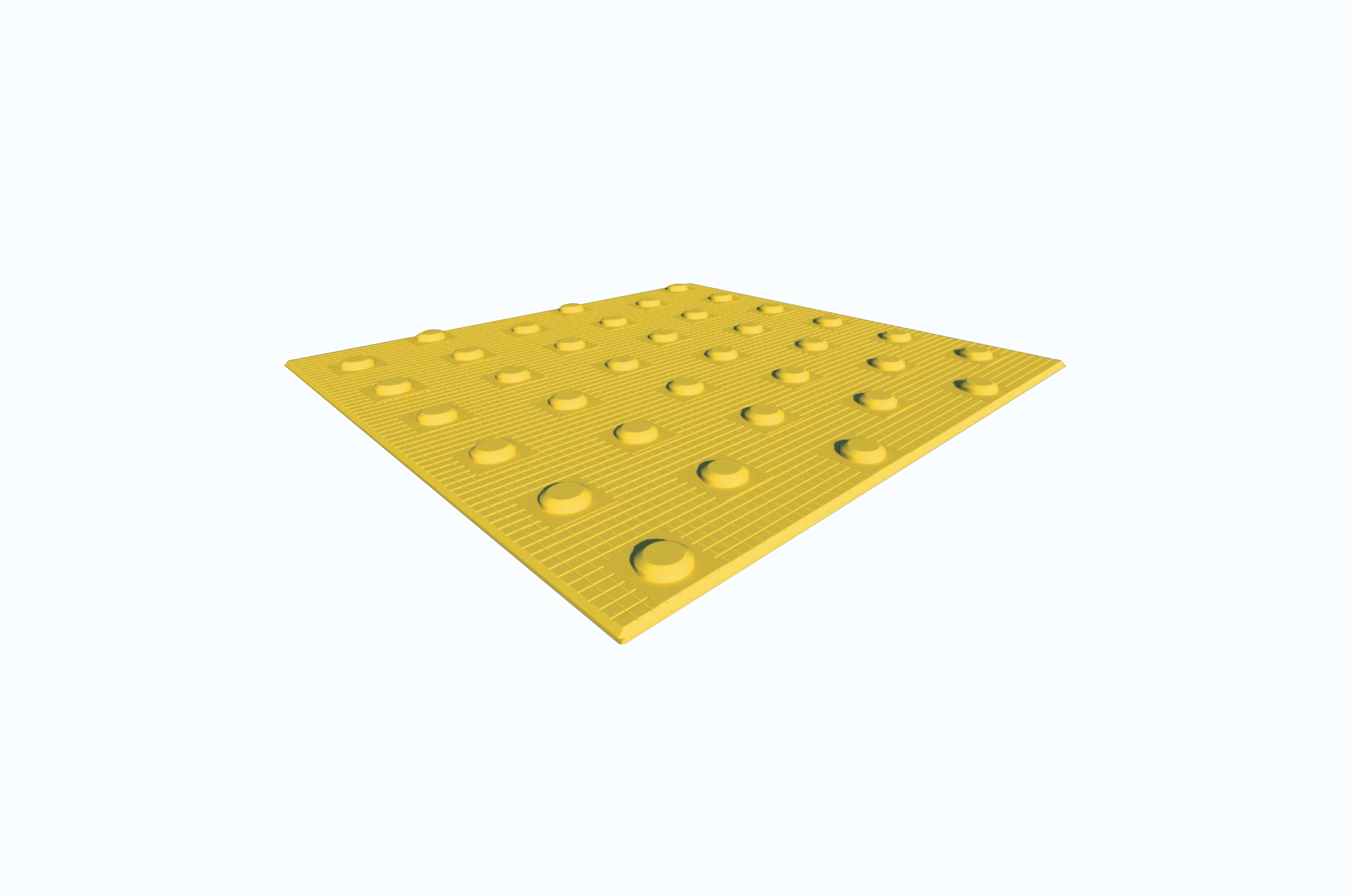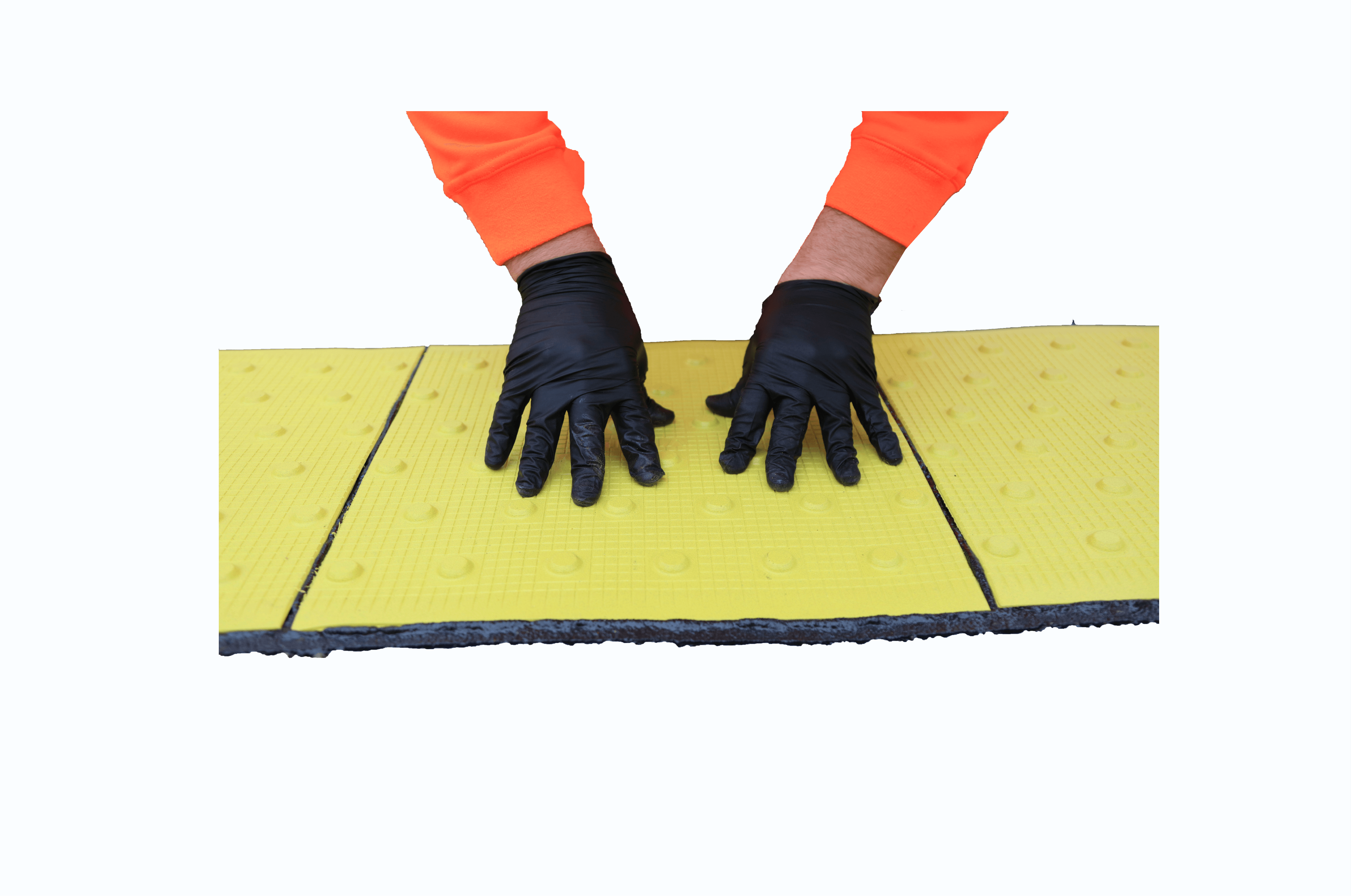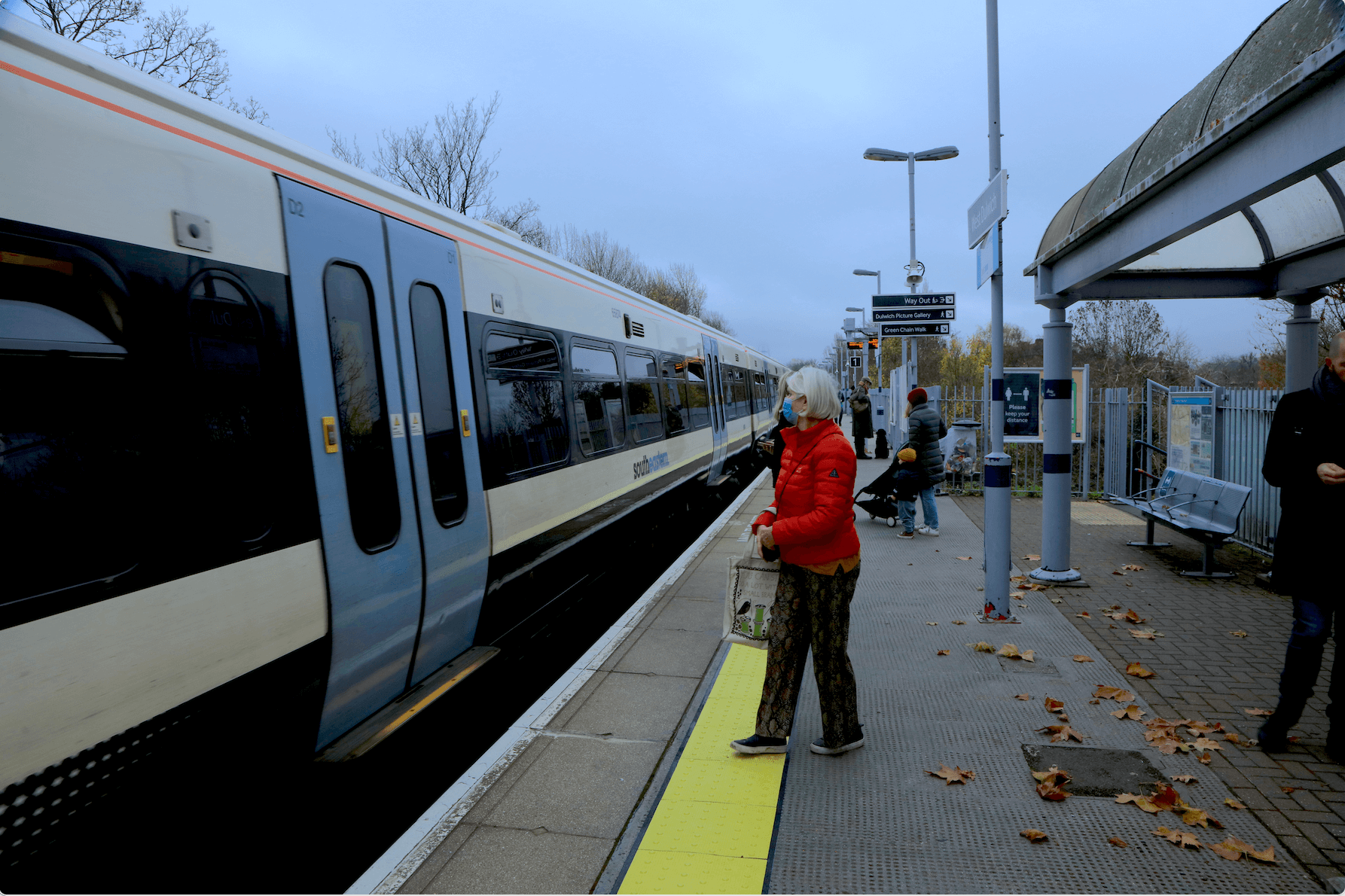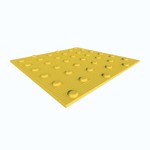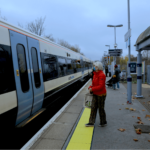TECHNICAL DATA SHEET
Tactile Paving
Safety SystemsSurface-mounted tactile paving slabs incorporate raised profiles to warn people that they are approaching a change in elevation such as railway platforms, pedestrian crossings, staircase ascent and descent areas and many other applications.
System benefits:
- No surface excavation required
- Rapid installation
- Adheres to most construction surfaces
- Hard-wearing and durable
- Lightweight and easy to transport
- No ‘hot works’ adhesive only application
Get in touch today
Our technical team are available now
There are approximately 1 million blind and partially sighted adults in the United Kingdom. Approximately 5% of these people have no sight at all. When moving around the pedestrian environment, visually impaired people will actively seek and make use of tactile information underfoot, particularly detectable floor indicators used in tactile paving.
Platform Edge (off-Street) Warning Surface
The purpose of this surface is to warn visually impaired people of the edge of all off-street railway platforms.
‘Visul’ tiles are the only tried and tested product with a trouble-free track record of over 15 years in both the rail and highway sectors.
The patented technique ensures near-perfect distribution of resin and special fillers within the tile construction
- Heavy weight fillers increase wearing qualities 7 times more resilient than concrete
- Lightweight fillers increases flexibility ensuring full contact with a substrate
Tactile Paving Performance and Test Data
- Network Rail & London Underground approved for over 15 years – Trouble free record
- New improved formula
- Increased skid resistance
- The specifically formulated adhesive has been tested for adhesion by Nufins
- Tensile tests were performed and the failure mode for the vast majority of the test samples was within the base substrate
- Wear tested for durability
- UV stable
- Freeze/thaw tested
- Manufactured to strict QA criteria
RAIL & LRT
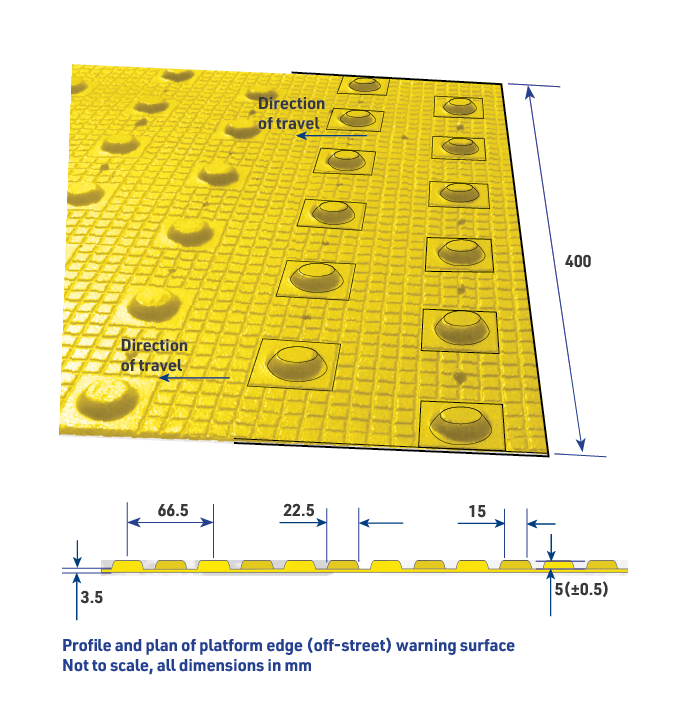
Platform Edge (off-Street) Warning Surface
The profile of the platform edge (off-street) warning surface consists of offset rows of flat topped domes 5mm (±0.5mm) high, spaced 66.5mm apart from the centre of one dome to the centre of the next.
Materials are manufactured under the ISO 9001 Quality Management Scheme and comply with ISO 14001 Environmental Standards.
Sizes:
• 400mm x 400mm
• 400mm x 600mm
• 400mm x 930mm
• 400mm x 1208mm
• 400mm x 1220mm

Applications:
HAZARD YELLOW, GREY, BUFF OR CHARCOAL
- Heavy rail platforms
- Off-street light rapid transit (LRT) platforms
- Underground platforms
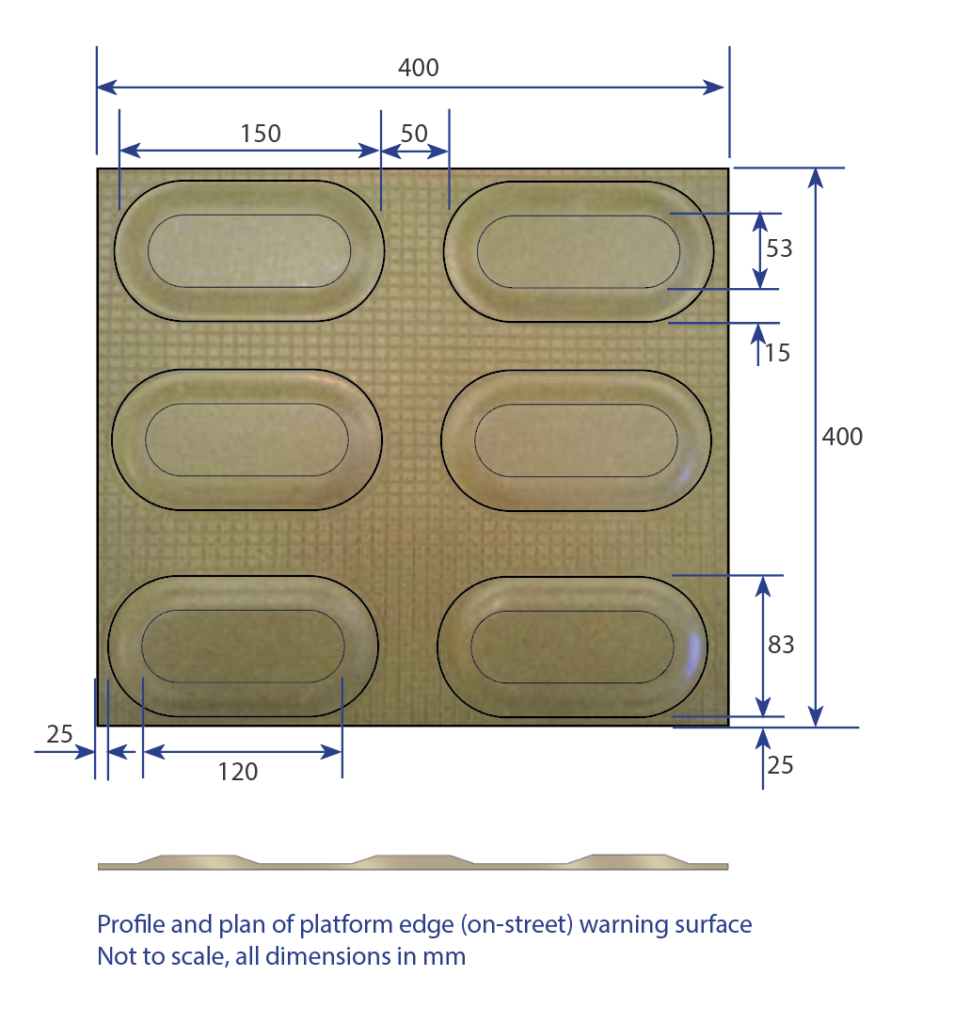
Platform Edge (on-street) Warning Surface
The purpose of the platform edge (on-street) warning surface is to warn visually impaired people that they are approaching the edge of an on-street light rapid (LRT)
platform.
The profile of the platform edge (on-street) warning surface comprises rows of ‘lozenge’ shapes. The lozenge shapes are 6mm (±0.5mm) high and have rounded edges in order not to be a trip hazard.
Sizes:
• 400mm x 400mm

Applications:
HAZARD YELLOW, GREY, BUFF OR CHARCOAL
- For use at all on-street LRT platform edges
BUILT ENVIRONMENT
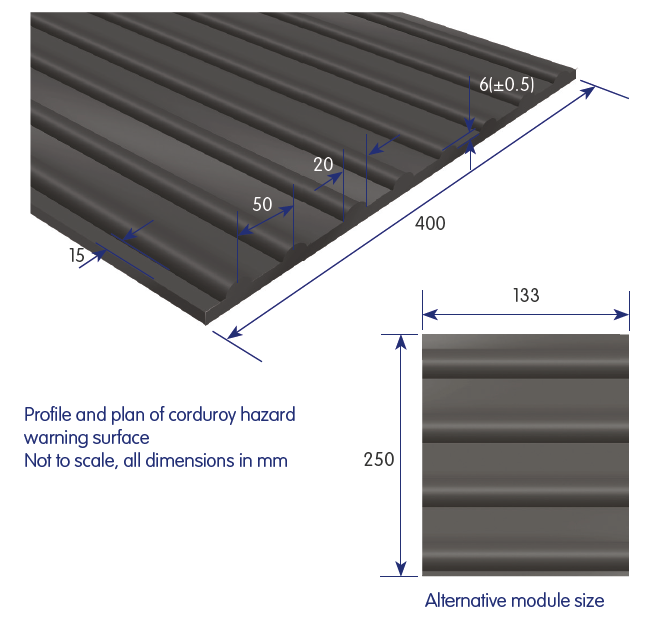
Corduroy Hazard Warning Surfaces
The purpose of the corduroy surface is to warn visually impaired people of the presence of specific hazards: steps, level crossings or the approach to on-street rapid transit (LRT) platforms. It is also used where a footway joins a shared route. It conveys the message ‘hazard, proceed with caution’.
The profile of the corduroy surface comprises rounded bars running transversely across the direction of pedestrian travel. The bars are 6mm (±0.5mm) high, 20mm wide and spaced 50mm from the centre of one bar to the centre of the next.
Sizes:
• 400mm x 400mm

Applications:
BUFF OR CHARCOAL SHOULD BE USED
- Tops and bottoms of stairs
- Foot of a ramp to an on-street rapid transit (LRT) platform, but not at any other ramps
- Level crossing
- Where people could inadvertently walk directly onto a platform at a railway station
- Where a footway/footpath joins a shared route
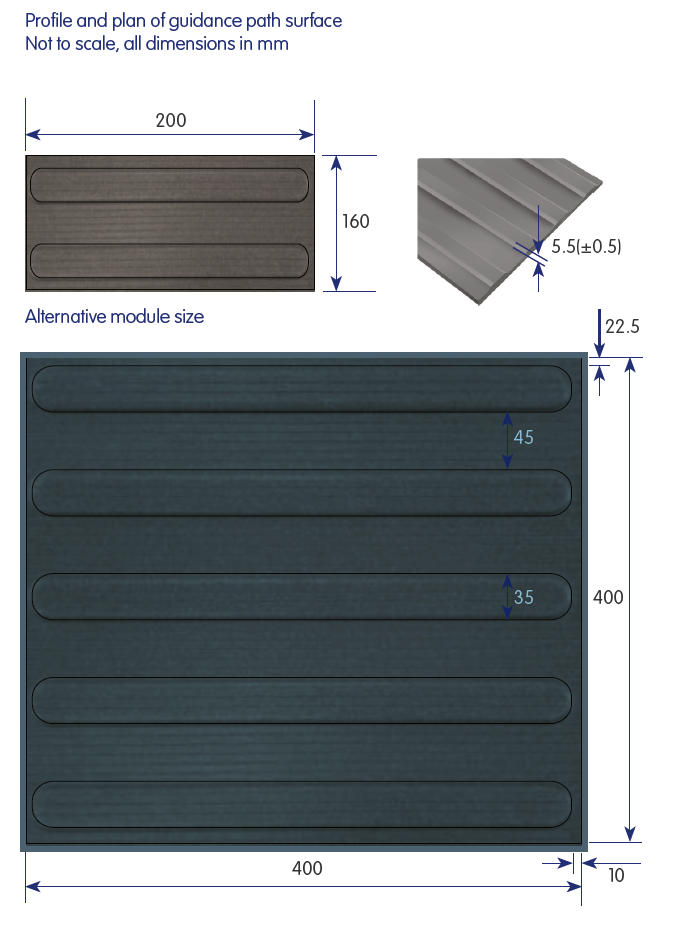
Guidance Path Surface
The profile of the guidance path surface comprises a series of raised, flat-topped bars running in the direction of pedestrian travel. The bars are 5.5mm (±0.5mm) high, 35mm wide and are spaced 45mm apart.
Sizes:
• 400mm x 400mm

Applications:
The guidance path is recommended for use in the following circumstances:
- Where the traditional guidance given by a standard footway between the property line and carriageway does not exist (for example, in a pedestrian precinct);
- Where pedestrians need to be guided around obstacles (for example, in a pedestrian precinct): although care should be taken in siting street furniture to ensure that such problems are not created;
- Where a number of visually impaired people need to find a specific location; and in transport terminals to guide people between facilities.
HIGHWAYS
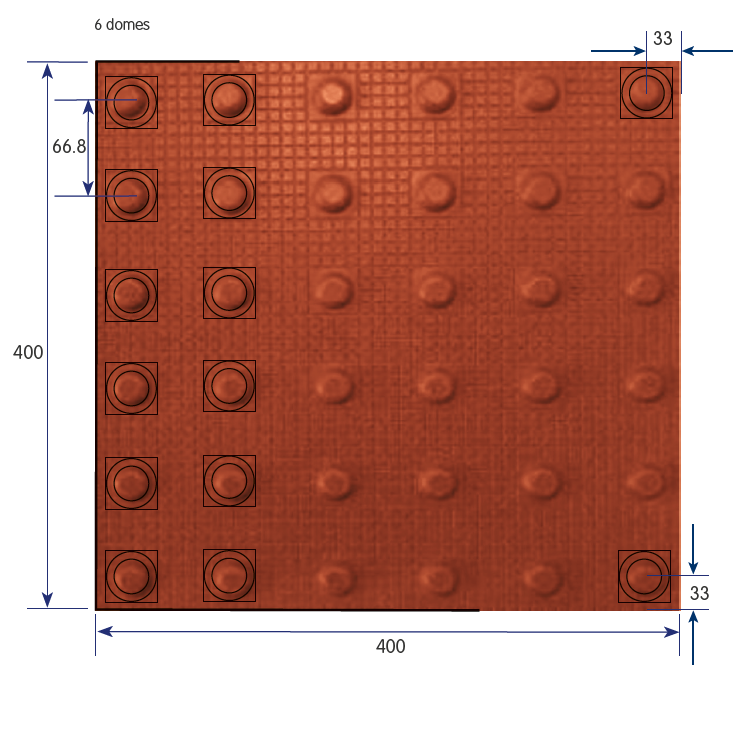

Blister Surface for Pedestrian Crossing Points
The blister surface’s purpose is to warn visually impaired people who would otherwise, in the absence of a kerb upstand <25mm high, find it difficult to differentiate between where the footway ends and the carriageway begins.
The surface is therefore an essential safety feature for this group of road users at pedestrian crossing points, where the footway is flush with the carriageway to enable wheelchair users to cross unimpeded.
Sizes
• 400mm x 400mm
• 450mm x 450mm
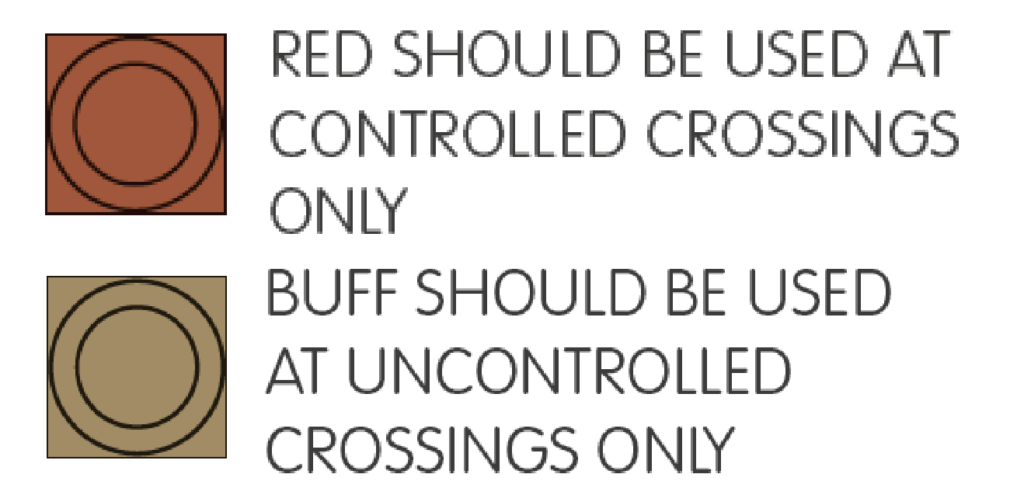
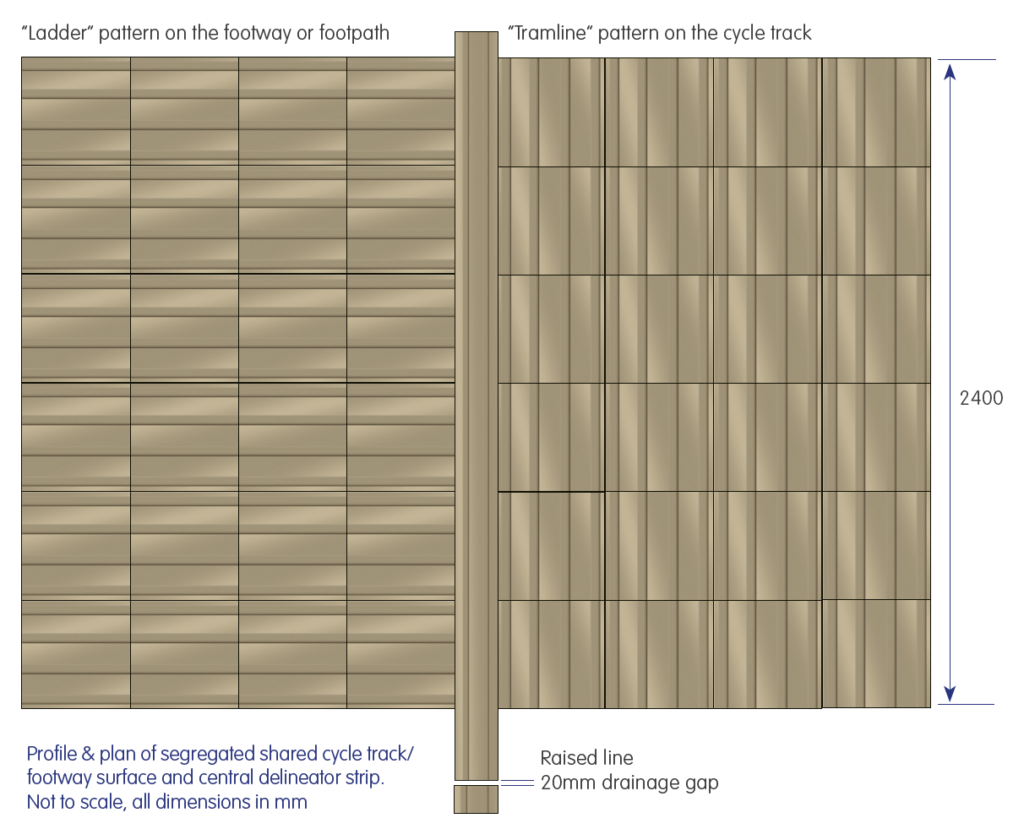
Segregated Shared Cycle Track/Footway Surfaces
The purpose of the tactile surface used in conjunction with a segregated shared cycle track/footway is to advise visually impaired people of the correct side to enter.

Applications:
The tactile surface should be used on any segregated shared route where the designated side is not physically separated from the designated cyclist side, forexample by difference in level.
CONSTRUCTION ACCESSORIES
Get in touch today
Our technical team are available now
Product Enquiry form
"*" indicates required fields
